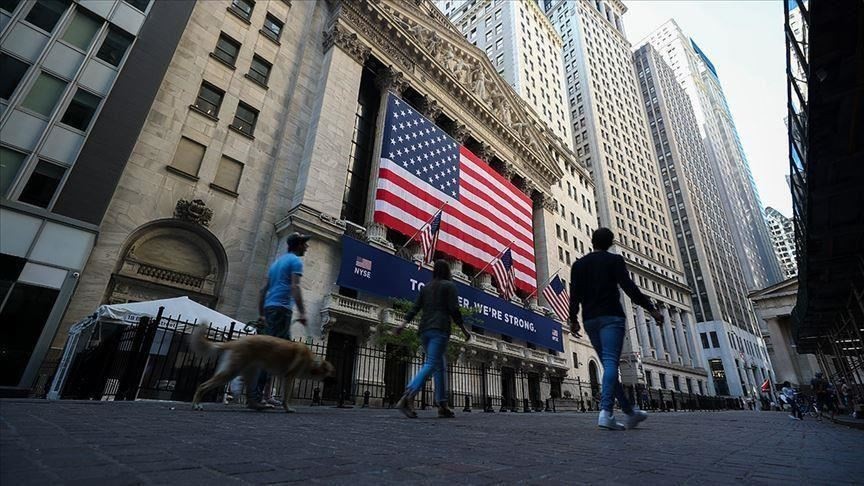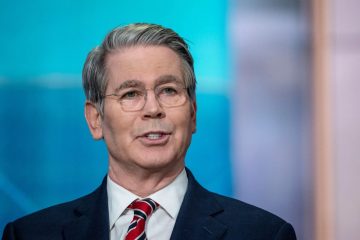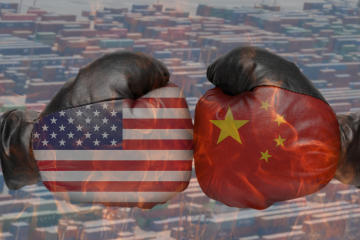Jobs market potential danger

The competitive job market led to numerous benefits for many individuals. There is a potential danger they face. The robust job market that ensued after the pandemic brought about numerous advantages, extending employment opportunities to a greater number of individuals, reducing wage disparities, fostering entrepreneurial activity, and driving increased investment in technology.
Everything is potentially in jeopardy. In July, there was a noticeable increase in the unemployment rate, rising from 4.1% to 4.3%. This represents a significant increase of nearly a percentage point compared to the low of 3.4% recorded in the previous year. The economy added 114,000 jobs, which is the slowest pace since late 2020, with the exception of April of this year.
Experts in the field of economics advise against jumping to conclusions about the labor market or predicting an imminent recession. Hurricane Beryl, which made landfall on the Gulf Coast in early July, could have had a temporary impact on job growth. The increase in the unemployment rate was primarily due to a larger influx of individuals entering the labor force, rather than a significant number of job losses.
However, a growing body of evidence indicates that there is a noticeable slowdown in the labor market. There has been an increase in new claims for unemployment insurance. Companies that previously expressed concerns about labor shortages are now finding it easier to fill job positions, resulting in a significant slowdown in hiring. There has been a deceleration in wage gains.
Some of this was anticipated, even welcomed. In 2022-23, the labor markets were exceptionally tight, indicating an economy that was grappling with supply-chain issues and worker shortages. These challenges led to the Federal Reserve’s preferred measure of inflation reaching a 40-year high of 7.1% in June 2022. The Federal Reserve increased interest rates in an effort to restore equilibrium to the economy and labor market, and to steer inflation towards its desired 2% target.
Now we must consider if the rebalancing has been taken to an extreme, and if those who profited the most from the strong labor market will witness their gains fade away, or persist.
Increasing numbers of mothers and Black Americans are finding employment.
Remote work has provided new opportunities for more women, particularly those with young children, to join the labor force. In July, 77.9% of Black Americans between the ages of 25 and 54 were employed, which is slightly higher than the 75.2% recorded in July 2019. These figures are not adjusted for seasonal variations.
There is a concern that the positive progress made by historically disadvantaged groups, which has been acknowledged by the Biden administration, may face a setback.
Elijah Agyemang expressed his frustration with the job search process, which has lasted for 11 months. I have applied to countless job opportunities, but unfortunately, I have yet to receive an offer for a stable, full-time position. The 24-year-old resident of Brooklyn, New York, has successfully completed a software-engineering boot camp and has gained valuable experience through various temporary roles and internships in the field. However, despite his qualifications, he expressed frustration with the lack of opportunities due to not having a college degree.
“In the field of IT or technology, I often encounter the perception that I lack sufficient experience or that employers prefer candidates with formal degrees,” he remarked.
Arthur Okun, a renowned economist, introduced the concept of a “high-pressure economy” in the 1970s. He believed that such an economy, operating above its sustainable rate, had the potential to enhance workers’ upward mobility. In an October 2016 speech, former Fed Chairwoman Janet Yellen discussed the potential consequences of allowing the labor market and economy to operate at high levels for a period of time.
According to her, a robust economy could potentially attract a larger workforce, facilitate the transition of workers into more efficient roles, promote investment in capital and research, and foster the growth of new businesses.
What’s the catch? Yellen, who is now the Treasury secretary, warned that an extended period of a high-pressure economy could potentially heighten the chances of a financial crisis or inflation.
The Federal Reserve quickly had an opportunity to put the hypothesis to the test. In the September 2016 projections of Fed policymakers, Yellen made a forecast of 4.5% for the unemployment rate in the fourth quarter of 2019. The percentage dropped to 3.6% instead. Despite inflation being at a modest 1.4%, the Federal Reserve has been able to maintain low interest rates, ranging from 1.5% to 1.75%.
Initially, the pandemic appeared to bring an end to the intense labor market. However, with the economy bouncing back, thanks to low interest rates and government relief, the job market experienced a surge in activity. In early 2023, the unemployment rate reached its lowest level in over fifty years, with a significant increase in the number of individuals joining the labor market.
Last month, the labor-force participation rate among individuals aged 25 to 54 reached its highest level in more than 20 years. Low-wage workers, specifically, transitioned into more lucrative positions. This contributed to an increase in pay that exceeded the rate of inflation and helped to decrease wage inequality. According to a study conducted by David Autor, Arindrajit Dube, and Annie McGrew, a significant portion of the pay gap between the lowest-earning and highest-earning workers has been reduced since the beginning of the pandemic until mid-2023. This reduction accounts for approximately one-third of the pay gap that had accumulated over the past four decades.
Meanwhile, business investment in software and research and development, as a share of gross domestic product, saw a significant increase above the pre-pandemic trend, according to observations made by Michael Pearce, an economist at Oxford Economics. There was a significant increase in new business creation as well. According to figures from the Commerce Department, there has been a significant increase in applications for businesses that are more likely to hire employees. In fact, these applications were 26% higher in the second quarter compared to the fourth quarter of 2019.
Productivity, measured by the amount a worker produces in an hour, is showing signs of improvement. According to the Labor Department, it grew by 2.7% in the second quarter compared to the previous year. This is a significant increase compared to the average annual pace of 1.4% observed over the past 15 years. If maintained, this would enable the economy to experience accelerated growth and facilitate an increase in wages without triggering inflation.
“We are witnessing the positive outcomes of that robust economy,” Pearce remarked.
The Federal Reserve didn’t necessarily desire the economy to be under such intense strain. However, as inflation approaches the Federal Reserve’s 2% target, it is cautious about losing the advantages of a high-pressure economy due to inflation.
A downturn in the economy could have that effect. Historically, downturns have disproportionately impacted individuals who are younger, have lower levels of education, and are economically disadvantaged. Extended periods of unemployment can diminish one’s skills, making it more challenging to reintegrate into the job market. Startups can also face difficulties in maintaining their stability, as highlighted by John Haltiwanger, an economist from the University of Maryland.
The unexpected surge in the U.S. economy following the pandemic has brought about a new sense of dynamism. There is a potential risk that it may disappear.










